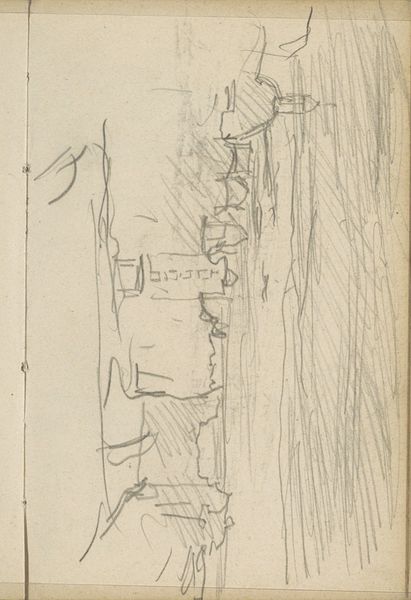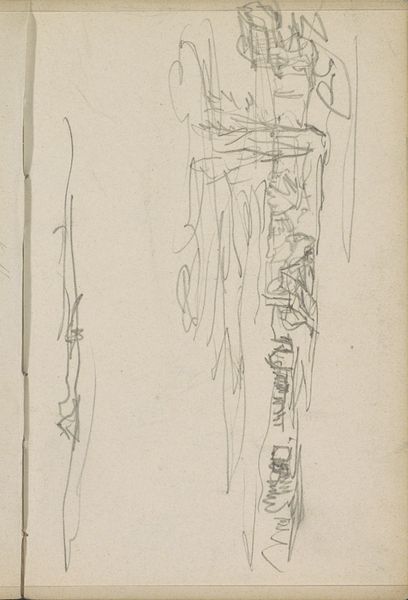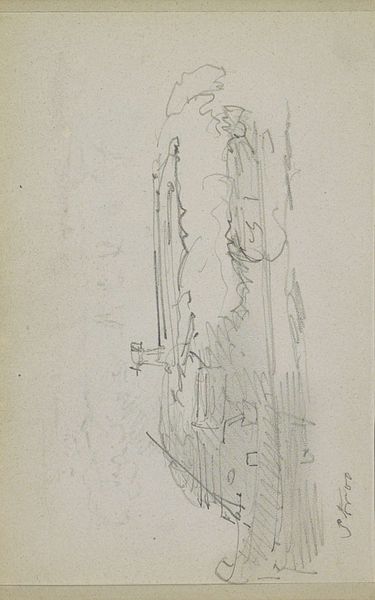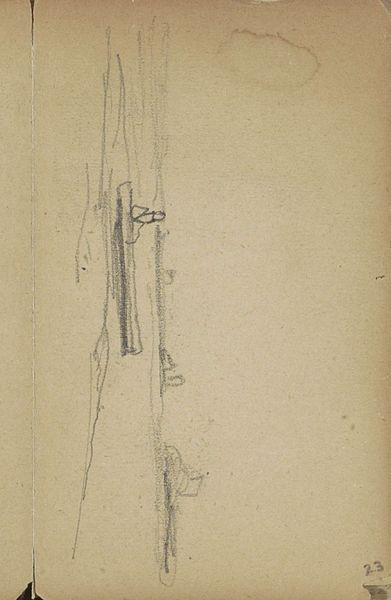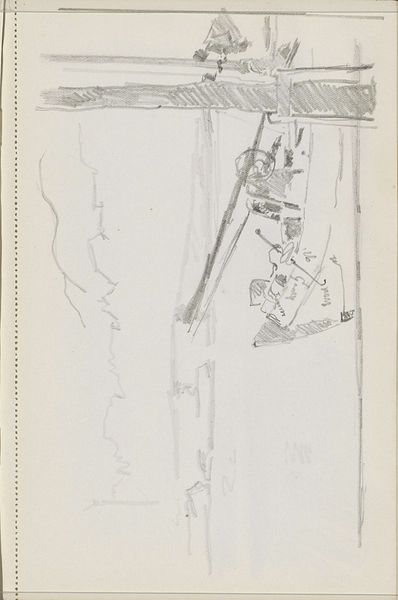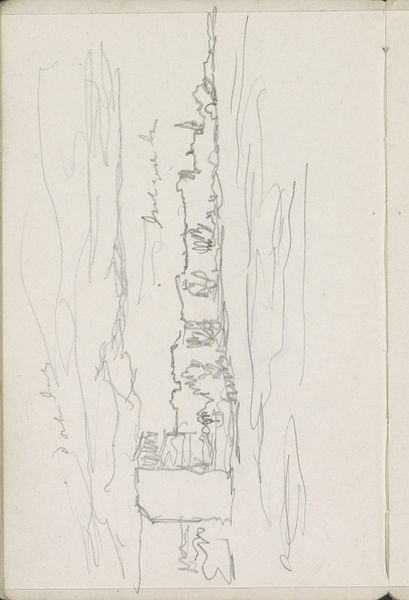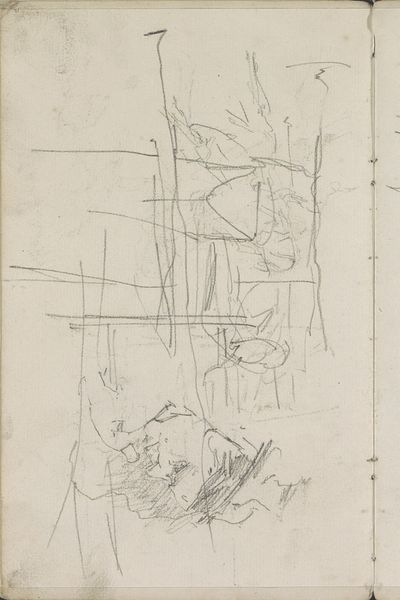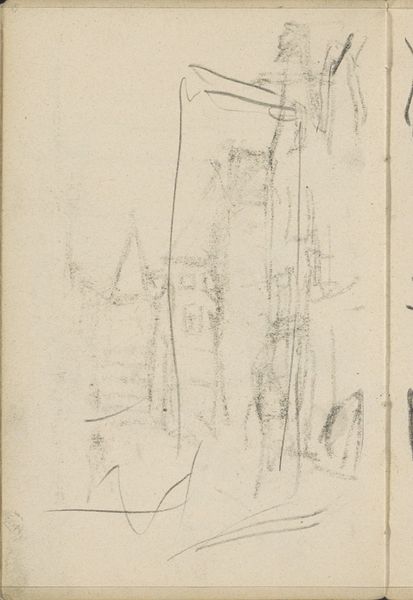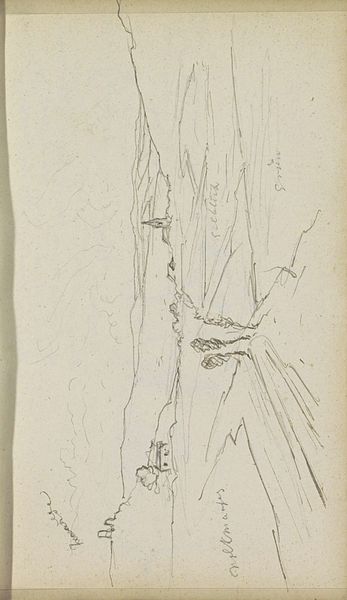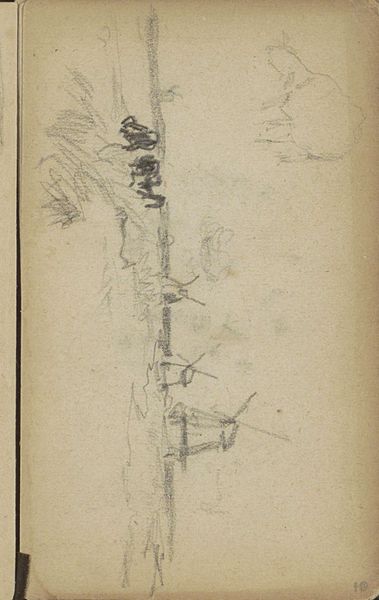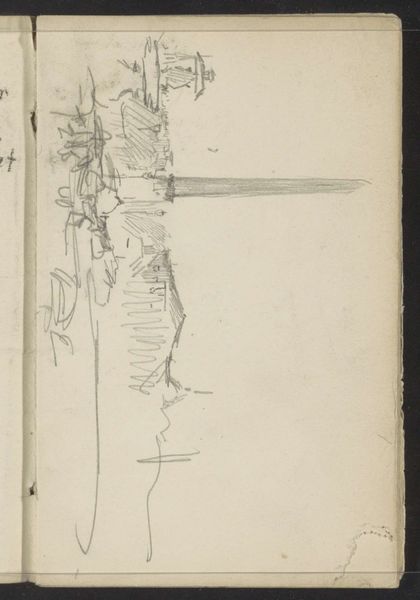
Copyright: Rijks Museum: Open Domain
Curator: This drawing, simply titled "Landschap," or "Landscape" in English, was created by George Hendrik Breitner around 1903. Breitner was a key figure in the Dutch Impressionist movement. The work, rendered in pencil, resides here at the Rijksmuseum. Editor: My immediate impression is of transience. There's an ephemeral quality to the linework, almost like a memory fading before us. It is not so much a representation of trees, but more the symbol of one. Curator: Breitner's engagement with the urban landscape often reflected his own socio-political awareness. Though this is nominally a "landscape," can we read in it a broader commentary on nature's place within a rapidly industrializing society? Editor: Absolutely. The sketch's roughness evokes raw emotional expression that connects us, maybe subconsciously, to universal human experiences with the wilderness as a kind of untouched Eden, so to speak, and invites us to imagine the symbolic associations and emotions individuals throughout history may have projected onto the scene. What do you see in this work? Curator: I am particularly drawn to how Breitner uses line—both bold and delicate—to suggest form rather than meticulously define it. In the social context of its time, that technique aligned with the Impressionist focus on subjective experience over objective reality. What might these very simple lines signify regarding social abstraction? Editor: Perhaps they express an idea of our disconnected relationship with nature and also call up the notion of constant renewal within landscapes, symbolizing constant renewal for the soul, or perhaps, just a release of modern pressures. Curator: That tension between representation and abstraction, combined with the social and political undercurrents, provides a rich entry point for discussing not only art history but also issues relevant today—the human-nature divide, environmental concerns. Editor: Agreed. The symbolic language, in tandem with Breitner’s visual vocabulary, speaks volumes even with its apparent simplicity. Curator: Thank you for lending your perspective. It’s so vital to look at art in different ways to uncover something that relates to us today. Editor: A pleasure. Hopefully this conversation sparks more contemplation of our connection with the environment, reflected by symbols of its various representations in art.
Comments
No comments
Be the first to comment and join the conversation on the ultimate creative platform.

